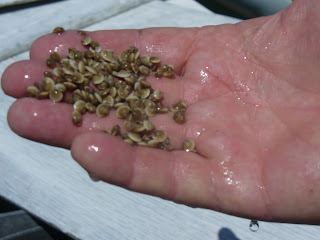
(Originally posted 03.02.10.ad)
Let's face it, Irish cuisine gets a bad rap. In this day and age, most of what we understand to be "Irish Cuisine" is limited to the fast food served in pubs and joints like Bennigan's and O'Charley's. What's worse, food from the Emerald Isle all too often evokes the image of the potato. Oh, Yeats and Joyce spin in their graves at such generalizations. What few people realize is that Ireland actually has a very rich, if not politically and socially challenged, culinary history.
Traditionally, Irish cuisine has been dependent on the resources native to the island. The lush, green countrysides were perfect grazing grounds for cattle and sheep, so naturally the Irish would command a taste for excellent beef, dairy, and lamb. For centuries, Irish beef was so prized in Europe that it became a major point of contention for Roman and British empires. Irish bacon comes from fine pork on the island. Fresh vegetables and grains also played a major role in Irish cuisine. Cabbage, tomatoes, oats, and barley grow exceptionally well in Ireland's temperate climate. And of course, one would be remiss to exclude the role of seafood on the island. Songs and poems have been written about the mussels, not to mention the salmon, trout, and cod that have come to typify the diets of Irishmen. For the most part, Irish diets were primarily based on butter, milk, and grain.
It wasn't until the mid-sixteenth century that the potato was introduced, and even then, it was intended as a "garden crop" to supplement the grain and dairy-based diets. One common use for the potato was to fatten pigs before the winter harvest, adding a heartier flavor to bacon and other cured meats that sustained them through the brutal Irish winters. However, social and political developments changed the landscape of the country and the diets forever.
Tudor rule in England all but forbade Catholicism and heavy penalties were enacted to enforce these restrictions. In Ireland, the troubles were much worse, as the British enacted Penal Laws to punish the Catholic majority of the island. These laws prevented Irish Catholics from voting, holding office, and from buying land or bequeathing their own property to their decendants. Their land would be divided up among their heirs, thereby reducing the plots of land that an Irishman was allowed to use for farming. At the time, the primarily agrarian culture had no other way to sustain their families, so this development was staggering. They no longer could use their pastures for cattle, but instead, developed a form of monoculture. The potato was the only food they were able to cultivate. Armed with all of the nutrients a person needs to survive, many Irish families knew only the potato as a source of food.
Unfortunately, the potato was very succeptible to blights and diseases. When droughts or crop failures occured during this period, the effects could be devastating. Such was the case during the misnamed "Great Irish Famine" (1845-1849), where a potato blight caused the entire crop to fail for years. This led to massive starvation and emigration for the country. More than half of the population of the island either died or relocated, many of them to America. With them, they brought culinary traditions of years long past.
This diaspora has led to many misconceptions about Irish cuisine, mostly since their traditions, diets, and ways of life had been smothered by British rule. Most of what now constitutes "Irish cuisine" is reimaginings of traditional Irish staples fused with contemporary cooking styles. One of the best examples is boxty, best described as a "potato pancake." Boxty is prepared by making a crepe-like vessel that is filled with Irish delights such as fish, fresh cheese, meats and/or vegetables. Fish and Chips is a long-standing Irish dish which pairs battered Cod and "fries" with copious amounts of salt and malt vinegar. Oyster festivals are abound on Irish seashores as they celebrate both the traditional Irish oyster (
O. Edulis) as well as the newly-introduced Pacific oyster (
c. gigas), usually with a pint of Guinness.
Irish cuisine is a young cuisine, but stepped with a history as old as the cliffs of Galway, and as troubled as the turbulent waters of the Irish Seas. For a little taste of the culmination of centuries of a heritage, a culture, and of a people, we asked you to join us at blu seafood and bar on March 17th -- the feast day of St. Patrick -- for a four-course meal inspired by the Irish Seas, each paired with a wine by our friends at the Hope Valley Bottle Shop.




 (Originally posted 03.02.10.ad)
(Originally posted 03.02.10.ad)